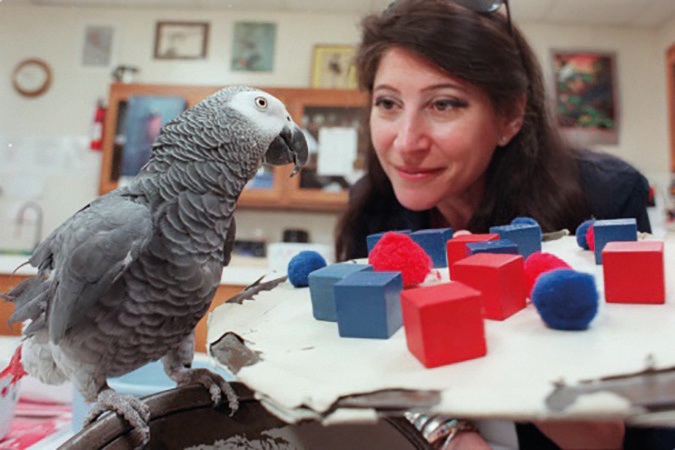Who's a clever bird, then?
In 1977, Irene Pepperberg, a recent graduate of Harvard University, decided to investigate the thought processes of another creature by talking to it. In order to do this, she would teach a one-year-old African grey parrot named Alex to reproduce the sounds of the English language. “I thought if he learnt to communicate, I could ask him questions about how he sees the world,” said Pepperberg.
Pepperberg bought Alex in a Chicago pet store. She let the store’s assistant choose him because she didn’t want other scientists to say that she had deliberately chosen an especially smart bird. Given that Alex’s brain was the size of a walnut, most researchers thought Pepperberg’s communication study would be pointless. 1. ................... .
With Pepperberg’s patient teaching, Alex learnt how to imitate almost one hundred English words, including the names of food. He could count to six and had learnt the sounds for seven and eight. But the point was not to see if Alex could learn words by heart. Pepperberg wanted to get inside his mind and learn more about a bird’s understanding of the world. 2. ....
In one demonstration, Pepperberg placed Alex on a wooden perch in the middle of the room. She then held up a green key and a small green cup for him to look at. “What’s the same?” she asked. Without hesitation, Alex’s beak opened: “Co-lour.” “What’s different?” Pepperberg asked. “Shape,” Alex said. His voice had the sound of a cartoon character. 3. ................... . Many of Alex’s cognitive skills, such as his ability to understand the concepts of ‘same’ and ‘different’, are rare in the animal world. Very few animals share these skills. But parrots, like humans, live a long time in complex societies. And like humans, these birds must keep track of the dynamics of changing relationships and environments.
“They need to be able to distinguish colours to know when a fruit is ripe or unripe,” Pepperberg explained. “They need to categorise things – what’s edible, what isn’t – and to know the shapes of predators. And it helps to have a concept of numbers if you need to keep track of your flock. 4. ....
In the demonstration, Alex then ran through various tests, distinguishing colours, shapes, sizes, and materials. He did some simple arithmetic, such as counting the yellow toy blocks among a pile of mixed coloured blocks. And then, as if to offer final proof of the mind inside his bird’s brain, Alex spoke up. “Talk clearly!” he commanded, when one of the younger birds Pepperberg was also teaching mispronounced the word green. “Talk clearly!”
Alex knew all the answers himself and was getting bored. “He’s moody,” said Pepperberg, “so he interrupts the others, or he gives the wrong answer just to be difficult.” Pepperberg was certainly learning more about the mind of a parrot, but like the parent of a troublesome teenager, she was learning the hard way.

